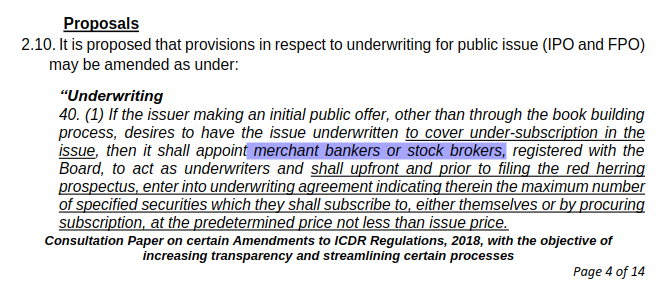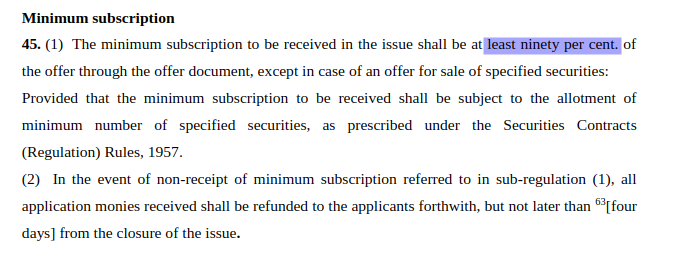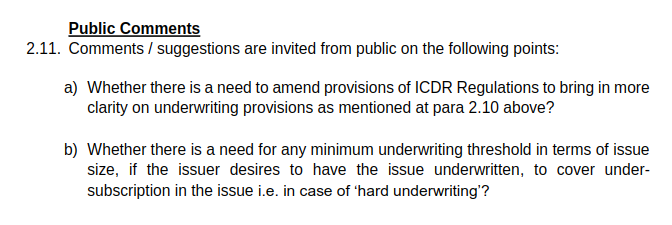SEBI has floated this consulation paper where one of the proposals is to introduce hard underwriting for IPOs.
The company launching an IPO can pay the underwriters a fee to ensure the IPO does not fail. In case of inadequate subscription, the underwriter buys the shares.
Who is an underwriter?
SEBI defines merchant banks and stockbrokers as entities that can underwrite an IPO. Below is an extract from the consultation paper.

What does underwriting mean in an IPO?
The IPO issuer enters into an agreement with its merchant banks to guarantee that the IPO will not fail. There are two forms of underwriting - soft & hard.
In case of soft underwriting, the risks guaranteed against are lower. The SEBI consultation paper mentions this form of underwriting is presently used in India for covering payment risk in an IPO. Here, the underwriting agreement ensures the IPO does not fail if the minimum subscription is received, but payment could not be collected.
What is the minimum subscription?
In case a company is raising Rs. 100 in an IPO, it should at least get subscription of Rs. 90. If it fails to get 90% subscription, the IPO will have to be forfeited. Here is an extract of SEBI’s ICDR Regulations:

However, if the company is raising Rs. 100 where Rs. 80 is in form of new shares, and the balance is in form of shares sold by existing investors/promoters, the offer size to be considered is Rs. 80. Therefore, the minimum subscription becomes Rs. 72 [i.e. 90% of Rs. 80].
The balance, i.e. Rs. 20, is called the offer for sale portion of the IPO.
Example of a soft underwriting arrangement
Suppose a company is raising Rs. 100, which is completely in form of new shares. Now, the subscription needs to be at least Rs. 90 for the IPO to sail through. The company collects bids of Rs. 92.
In the above scenario, the IPO will be deemed successful. However, during allotment, the registrar of the company finds the 5% of the applications cannot be processed due to technical failures. [Check out this post for the list of entities involved in the IPO process]
The net payment the company is able to now collect is Rs. 87. The underwriter will buy shares worth Rs. 3, to ensure the minimum subscription requirement is fulfilled.
What is hard underwriting?
In the above example, the IPO would have failed if the subscription collected initially was for Rs. 80 instead of Rs. 92. The merchant banker’s obligation to underwrite would not be triggered.
If an IPO is hard underwritten and is able to only collect Rs. 80 worth of subscriptions, the IPO will still sail through. The merchant banker will have to buy Rs. 10 worth of shares to bring the IPO collections up to the minimum subscription mark. The underwriting agreement could also be structured such that the underwriter has to buy shares worth Rs. 20, i.e. to ensure entire Rs. 100 IPO collections are done by the company.
Here are a couple of questions SEBI has posed for public comments in relation to the proposal on hard underwriting:

What are the benefits?
The company launching the IPO will benefit from the increased assurance of their IPO sailing through. The uncertainty from the view point of an IPO investor also reduces since the merchant bank guarantees the success of the IPO. Both of these benefits come at a cost, i.e. higher fee for the merchant bank.
Important - Just because the IPO process becomes guaranteed, it may not translate into better stock performance. The factors at play, once the stock lists, are the same.